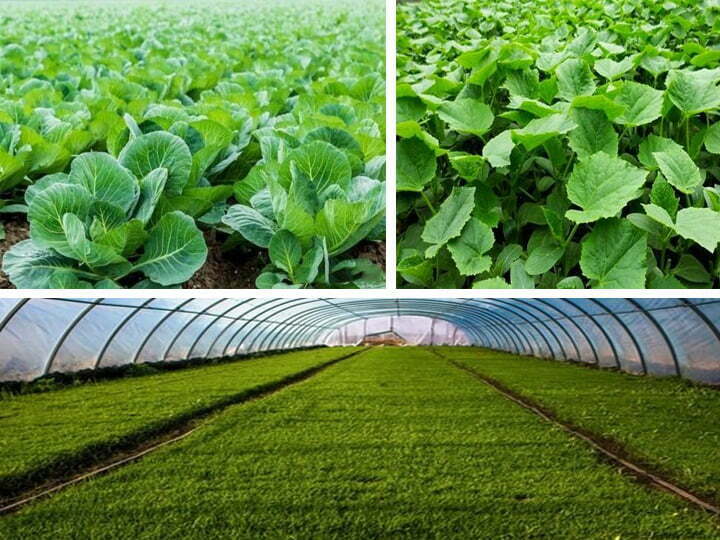Utangulizi
Odling av grönsaksplantor avser processen att odla unga växter i fröbädden innan grönsakerna transplanteras. Grönsaksodling använder metoden för att odla plantor och transplantera, vilket är bekvämt för noggrann hantering av plantorna, och artificiella skyddsanläggningar kan också användas för att kontrollera miljöförhållandena för tillväxt och utveckling av plantorna. Därigenom är det fördelaktigt att förbättra sådden och påskynda sådd och skörd. Det kan odlas och produceras under säsonger som inte är gynnsamma för grönsakstillväxt.
Krav: Om man ska använda plantor och transplantering för grönsaksodling beror på egenskaperna hos olika typer av grönsaker och växtförhållanden. Grönsaker som är benägna att växa sidorötter efter att huvudroten blivit skadad, såsom tomater, paprikor, kål, kål och selleri är generellt sett lämpliga för planttransplantation; dessutom kräver plantskolans plantor mer arbetskraft, materialanläggningar och mer sofistikerad teknik än direkt sådd. När dessa villkor inte uppfylls är det inte lämpligt att anta plantskolans metoder. Men med utvecklingen av vetenskap och teknik kan en plantskolemaskin slutföra plantskolan.
Mbinu ya Kupalilia miche
Kulingana na mahali na hali ya kituo cha miche, kuna njia mbili kuu za kitalu cha kisasa cha mboga:
Kitalu cha hewa wazi: njia ya miche ya kitalu chini ya hali ya kitalu kilichowekwa shambani hutumika zaidi kuoteshea miche ya mboga za majani na vitunguu; matunda na mboga pia inaweza kutumika kwa njia hii katika mikoa ya joto au misimu. Gharama ya miche ya kitalu kwenye shamba la wazi ni ya chini, kazi ni ndogo, na teknolojia ni rahisi zaidi; lakini msimu wa kuinua miche na ukuaji na ukuzaji wa miche huzuiliwa na hali ya asili, na wanakabiliwa na majanga ya asili.
kitalu katika shamba lililohifadhiwa: njia ya kitalu ambamo kitalu huwekwa kwenye kituo cha kinga bandia. Faida zake ni kwamba ni manufaa kudhibiti hali ya mazingira katika hatua ya miche, kuzuia majanga ya asili, na kuwezesha kazi na kusimamia; lakini vifaa vinavyohitajika, gharama za uzalishaji, na mahitaji ya kiufundi ni ya juu kiasi.

Mchakato wa ukuzaji wa miche ya mboga ni kutoka shamba la wazi hadi shamba lililohifadhiwa. Mwisho hutumiwa sana na vifaa ni kamilifu zaidi na vya kisasa. Vifaa vya ulinzi vinavyotumiwa kwa kawaida ni pamoja na vitanda vya kupozea, vitanda vya joto, nyumba za kuhifadhia miti, shehena za plastiki, na nyumba za kuhifadhia mazingira za plastiki. Miche ya mboga katika shamba lililohifadhiwa mara nyingi hutumia kitalu cha trei.
Mbinu na Taratibu
Njia ya kukuza miche inatofautiana na aina ya mboga. Mboga nyingi hupandwa na mbegu; Taratibu kuu za kupanda miche kwa ujumla ni pamoja na:
- Maandalizi ya kitanda cha mbegu
Ikiwa kitalu kinapaswa kuwa wazi au shamba lililohifadhiwa, unaweza kuamua kulingana na hali ya hewa ya ndani na mahitaji ya uzalishaji. Kwa ujumla, udongo wa kitamaduni uliotengenezwa maalum hutumiwa kama udongo wa kitanda. Baada ya kubadilishwa vizuri, ina sifa nzuri za kimwili na kemikali: rutuba ya juu, uingizaji hewa mzuri, na uwezo wa kuhifadhi maji kwa nguvu ili kuwezesha ukuaji wa miche.
- Matibabu ya mbegu na kupanda
Vänligen se den föregående artikeln för detaljer: Förberedelse innan plantskolan
- Usimamizi wa miche
Ni sehemu muhimu ya kilimo cha miche ya mboga. Kwa ujumla ni pamoja na: kurekebisha halijoto, unyevunyevu, mwanga, unyevu, hewa, na hali ya lishe kwenye kitalu; kung'oa miche ikiwa ni mnene sana kwa wakati ili kudumisha umbali sahihi wa miche; kuzuia magonjwa, wadudu na magugu, kuzuia baridi, ukame na majanga ya mafuriko.
- kupandikiza
Hiyo ni, wakati hali ya hewa inafaa, miche iliyopandwa inapaswa kupandwa kwenye shamba kwa wakati unaofaa. Wakati huo huo, makini na kulinda mizizi ya miche ili kupunguza uharibifu.
